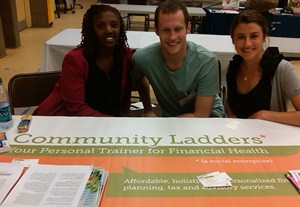Cat Казино – всё лучшее из отрасли казино игр в одном месте!
На этом сайте вы найдете фантастические веб развлечения, в частности, от Habanero, Amatic и Spinomenal, надёжный веб-сайт, лицензированный UKGC. Предусмотрен также бонусный раздел с повседневными предложениями, которые могут пополнить ваш счет. Получите приветственный пакет в Cat Казино! А обойти блокировки гемблерского портала вам поможет актуальное зеркало Cat Казино.
Азартные игры в Кэт Казино
В Cat Казино вы найдете фантастический выбор карточных игр и других игр казино. Как насчет спинов на Starburst? Или вам предпочтительны хорошие варианты как рулетки, так и блэкджека? Или, вероятно, игра в покер? В Кэт Казино предлагается всё!
Все это распространяется на безумно заманчивом и симпатичном ресурсе казино. Здесь обычный фон, а это значит, что выделяются именно игры. Вы можете смело найти классные игры от таких провайдеров, как:
– Yggdrasil,
– TrueLab,
– NetEnt,
– Platipus,
– Push Gaming,
– Novomatic,
– Merkur.
Сюрпризы для игроков и акции Cat Казино
Безупречное современное казино должно начислять классные бонусные сюрпризы. Это то, что нравится разным игрокам! Cat Казино может обещать вам пакеты счастья ежедневно! Вот определённые из них:
– необходимы бесплатные вращения в начале недели? Каждый понедельник с 17:00 до 18:00 вы можете получить бесплатные вращения, если вы сделали депозит в размере 12 usd или более.
– во вторник существует бонус за матч, который следует за вами постоянно, каждый вторник. 20% — это сюрприз, который вы можете использовать пару раз, каждый вторник в казино.
– отправляйтесь в выходные с классным бонусом по пятницам, субботам и воскресеньям с 7:00 до 15:00! Чтобы получить бонус, вы обязаны внести 30 USD или более. Это предоставит вам бонус на матч в размере 50%!
Стать игроком в Cat Казино в целом просто. Тут легко пройти регистрацию, и следовательно вы попадаете в игры в бешеном темпе. Регистрация включает в себя два шага: вы предоставляете свою информацию и выбираете имя мембера.
Для начала игры вам следует пополнить азартный счет. В Кэт Казино предлагаются такие варианты денежных транзакций:
– PaySafeCard,
– MasterCard,
– Skrill,
– UnionPay,
– ecoPayz,
– МИР,
– другие транзакции.
У целевой аудитории также предусмотрена возможность вносить средства в криптовалютах, среди которых биткойн (BTC), лайткойн (LTC) и Ethereum (ETH).
Cat Казино практически совместимо с смартфонами Android, iOS, Windows Phone и устройствами Blackberry. Просто перейдите по ссылке казино со своего смартфона и начните играть.
Всегда, когда вам потребуется помощь с этим онлайн-казино, просто свяжитесь со службой поддержки через Live-Chat, онлайн-форму обратной связи или страницу часто задаваемых вопросов. Служба поддержки Кэт Казино работает на постоянной основе, поэтому вы можете получить помощь, когда она вам будет необходима. Они делают все для того, чтобы персонал по обслуживанию целевой аудитории был доступен для пользователей.
Раздел FAQ является часто посещаемым меню. В блоке есть несколько вопросов и ответов, учитывая общие вопросы, вопросы о депозитах, выплатах, учетных записях, бонусных начислениях и т. Д. Этот всеобъемлющий сайт представляет собой одношаговое решение всех вопросов игроков. Еще одним важным ресурсом поддержки есть функция живого чата. Это предлагается с помощью LiveChat и доступно 24/7. Просто укажите свое имя и e-mail, чтобы начать разговор. Это эффективный метод получить незамедлительное решение на ваши вопросы или комментарии.
Кэт Казино — это безупречный сайт для клиентов, кто хочет дополнительных игр и развлечений в повседневной жизни. Тут вы по факту можете расслабиться среди топ игр и вендеров в азартном секторе, и вы можете сделать это, наслаждаясь определёнными ежедневными акциями, которые вам доступны.
Hooking up … financially
 You haven’t seen your partner fully naked until you’ve seen their credit reports (‘show me yours and I’ll show you mine’).
You haven’t seen your partner fully naked until you’ve seen their credit reports (‘show me yours and I’ll show you mine’).
In my seminars on personal finance, I often remark that people are more comfortable talking about sex with friends and colleagues than they are talking about personal finances. So, it doesn’t surprise me that so many couples avoid having meaningful conversations about comingled finances. I expect part of the reason stems from the nature of casual cohabitation. The decision to live together may be a gradual one, so there isn’t one event (such as a marriage ceremony) signaling that the couple is officially joined at the wallet. Talking about finances, both one’s history and future expectations, can seem like an even bigger (and more intimate) step than moving in together. Neither partner wants to raise the issue for fear of the seriousness it suggests and the ensuing awkwardness.
These are nonetheless terrible reasons to avoid the conversation. Most couples eventually do talk about finances – when they are in a financial crisis (and this is truly a bummer, as financial disputes are the leading predictor of divorce). Needless to say, the reason why many couples argue so much over finances has something to do with the fact that they are only starting to broach the issue when the pressure is on.
At Community Ladders, we work with couples all the time. Financial management with one person can be quite challenging, but doing it with two people is significantly more so, both in terms of expectations and implementation. Every couple is unique, but here are four things we typically do with couples in the first 6 months:
1) Budget using personal slush funds – Budgeting is one of the most difficult and individualized things we do with members, and it usually takes months of trying out different techniques to find a method that a member can instinctively stick to. The odds of getting two people to find success with exactly the same method is rare. So, instead, we create three accounts – a joint account for joint expenses and a personal ‘slush fund’ for each person. The idea of the slush fund is that each person still has some money set aside that is their ‘own’ that they can use as s/he sees fit. This helps limit resentment in the budgeting process. In order to cut back, people can reduce their personal slush funds using the budgeting technique(s) that works best for them. We also do some budgeting around joint items, but this process tends to proceed more smoothly once we’ve set up the personal slush funds successfully.
2) A third party to prompt questions and provide accountability – I’ve had couples regularly mention that financial conversations between them are much more frequent and productive because they are using my questions and suggested steps to frame the conversation. It’s not just one person asking a question of the other, but rather a discussion of a third party’s take on the family’s finances. While this is obviously within the context of a C-L advising relationship, non-members may be able to replicate this by using a book on couples’ finance that has specific discussion prompts. The main point to remember is that ‘neutral prompts’ from a third party will often be more effective at generating open dialogue than pointed questions from one’s partner.
3) Full transparency about history – I’ve worked with several couples with very uneven debt burdens coming into a marriage. We can generally work through most issues, and create a step-by-step plan. The only time I’ve seen this become difficult is when one party downplayed their debt or ‘forgot’ to mention it. As with most things, sunshine is the best disinfectant … and the sooner, the better.
4) Clear expectations and a discussion of fairness – This point is straight-forward, but I can count on one hand the number of couples I’ve seen that have actually had this conversation. Many couples (including, sadly, my wife and I) think they’ve had the conversation, but really just glossed over it, or remember it ‘differently’. Partners need to be clear on their financial expectations of each other and the family unit. In a similar vein, each partner needs to clearly indicate what they think is, and is not, fair in terms of contribution levels to joint expenses and savings for the future. To not have this conversation is to risk anger and resentment down the road.
This blog entry is turning into a novelette, so I’ll stop here. Couples are unique in their needs and what approach works best, but these four guidelines have served Community Ladders’ couples well so far.
In February, Community Ladders will be running a special for couples (details to come later this month). Send an e-mail today to couple@comlad.com to reserve your spot on the waitlist.
Bill Varettoni is a financial planner and the founder of Community Ladders.
Many Happy Returns (and Rebates)
 At C-L, we obsess about finding savings. As such, few things make us sadder than when people fail to redeem rebates, or don’t do returns on time.
At C-L, we obsess about finding savings. As such, few things make us sadder than when people fail to redeem rebates, or don’t do returns on time.
Rebates
Amazed at the great rebate deals at Staples? Wondering how your Newegg purchase can really be free after rebate? After all, there are no free lunches, so what’s up?
First and foremost, many people won’t return rebates at all – either they forget, they lose the receipt or UPC code, or they don’t act by the mailing deadline (often 30 days after purchase). If you aren’t redeeming the rebate, you likely paid a lot more for a product than you otherwise would have, because it was the rebate that enticed you to buy it in the first place.
Other rebates are designed to get you hooked on a product. This is often seen with computer anti-virus software. They entice you with a ‘free after rebate’ offer. Worst case for the company is that they rebate you the money, but you now have it on your computer and are much more likely to upgrade to next year’s version. Best case for them is that you forget the rebate, but install the program anyway.
Returns
Sometime over the last few years, return policies have gotten stricter. 14 to 30 days is now the norm for many companies for a refund or exchange. Some may give store credit for up to 60 or 90 days, but that’s not guaranteed anymore (I’m waging my finger at you Target!). Other stores, ranging from electronics to furniture stores, charge restocking fees of 20% or more. Others, like Costco, do not. But it’s not hopeless – some have even improved their return policy (Apple, for instance, accepts returns on engraved merchandise and extended their usual 14-day return policy through January 9 for all holiday purchases; Best Buy ended their 15% restocking fee on regular merchandise last year). The point here is that stores are changing their policies, and your expectations around what is returnable, how, and when may differ markedly from current policies. Vigilance!
Tips
Procrastination is the archenemy of returns and rebates. The clock ticks down, the receipt gets buried further in a stack of papers, and soon you are out of luck.
For C-L members that have found timely returns challenging in the past, we have advised putting items into physical piles based on where they will be returned (for instance, grouped by a specific mall, or packages going through the UPS store). Then, block off a time slot after work or on Saturday morning to do that bunch of returns. Keep the piles in a visible place, so you are constantly reminded. If a return is particularly timely, put it on your car seat the night before you are to return it, or next to your coffee maker.
For rebates, we suggested carving out time to do all rebates at once (realizing it tends to be within 30 or 60 days of purchase, not from the time it was given as a gift). Keep copies of everything submitted (including the addressed, stamped envelope) and put a reminder in your calendar for 2 months ahead (or whenever the estimated turnaround time is) to make sure you received your rebate. I can’t stress this enough. Twice in the past five years I’ve had companies insist they never received my rebate submissions, but they honored it once I produced the copies. Most rebates will allow you to select a check rebate as opposed to a store gift card or pre-paid visa card. Look for the alternative option, and choose the unattached cash.
Bill Varettoni is a financial planner and the founder of Community Ladders.
Realistic Resolutions
 Last year I made a resolution not to make any resolutions, and I achieved success thankyouverymuch. But for many Americans, resolutions start out with the best of intentions, only to wither and die by the time March Madness rolls around. Actually, a third of people won’t make it through the end of January, and 4 out of 5 will eventually break their resolutions. Nonetheless, at Community Ladders, we love goals and resolutions, but only if they are accompanied by benchmarks, timelines, and built-in accountability.
Last year I made a resolution not to make any resolutions, and I achieved success thankyouverymuch. But for many Americans, resolutions start out with the best of intentions, only to wither and die by the time March Madness rolls around. Actually, a third of people won’t make it through the end of January, and 4 out of 5 will eventually break their resolutions. Nonetheless, at Community Ladders, we love goals and resolutions, but only if they are accompanied by benchmarks, timelines, and built-in accountability.
Here are three tips we use when creating goals with members:
Don’t be too aggressive – Cold turkey is only good as Thanksgiving leftovers. While the cold turkey method of instantly stopping a bad habit or going at a goal full bore, many find that they burn out quickly, fail, and ultimately abandon the effort. The same is true with finances. Our members know that we break financial plans into smaller steps that we complete a few at a time. This is the kind of sustained, measured approach that seems to work best for long term changes in behavior.
Be reasonable in building a timeline – Echoing the preceding paragraph, it’s important to be reasonable about how much you can accomplish in a given amount of time. Without being too aggressive, lay out a series of interim targets for whatever your goal is. Put those targets in your main calendar (putting them separately makes them too easy to ignore). Also, plan in advance what will happen if you miss a target. For example, do you have a week to make it right if you miss a target? Is there a penalty you’ll impose on yourself? It’s vital to plan this in advance, since you will be more like to convince yourself to be lenient once you’ve already missed a target.
As an example of building a timeline with targets, I’m working with a member to reduce spending by 10% over six months. We are starting out with a 5% reduction in spending from previous levels (in this case, the average monthly expenditure over September through November). If she hits her target of a 5% drop for January, she will reduce spending by an additional 1% over the subsequent 5 months. So, if all goes as planned, by July she we will spending 10% less per month.
Stay accountable to someone – Since day one, Community Ladders has been punching the air for external accountability (namely, that members are accountable to their C-L advisor). So it is with New Year’s resolutions. Tell a friend, colleague, or C-L advisor what your goals and timeline are, and ask them to hold you accountable and to check in regularly. Better still, partner with someone who has a similar goal and work on it together. If applicable, build in interim rewards and penalties and tell others (so they can make sure you follow through).
For example, you might make an arrangement with work colleagues to encourage each other to pack a lunch more often. Compile a list of cool places to take your packed lunch out of the office, and make it a social outing without the cost of dining out.
Bill Varettoni is a financial planner and the founder of Community Ladders.
Time Banking: Your Time as Currency
 Markets are great at using money to mobilize material resources, but they are woefully inept at mobilizing human beings to address the vast social needs and inequities that exist today. This realization led Edgar Cahn to formalize a different type of market – one that valued the time of all individuals equally – called Time Banking. In a Time Bank, you can earn a Time Dollar by providing a service to someone in your community. An online system records that transaction, and you can then spend that Time Dollar by receiving a favor from someone else in the community. Unlike bartering, there is no higher price associated with services provided by people with more education or professional abilities.
Markets are great at using money to mobilize material resources, but they are woefully inept at mobilizing human beings to address the vast social needs and inequities that exist today. This realization led Edgar Cahn to formalize a different type of market – one that valued the time of all individuals equally – called Time Banking. In a Time Bank, you can earn a Time Dollar by providing a service to someone in your community. An online system records that transaction, and you can then spend that Time Dollar by receiving a favor from someone else in the community. Unlike bartering, there is no higher price associated with services provided by people with more education or professional abilities.
Time Banks exist across the country and around the world. The DC Time Bank got started only last year, but has caught on quickly and now has 280 members (including Community Ladders’ founder).
What types of services are being exchanged? – Language lessons, business plan help, dog walking, car fixing, house painting, babysitting, car rides, juggling lessons, dance lessons, gardening, cooking lessons, and much more.
Although Time Bank transactions are recorded online, you don’t have to use a computer to be a part of the Time Bank. The Time Bank Coordinator can facilitate exchanges involving members of the community who do not have computer access.
For a list of Time Banks across the United States (including local chapters in Takoma Park and Columbia, MD), click here. If you are interested in joining or learning more about the DC Time Bank, contact Allison or visit the website. If you’re in the DC area, on November 12th, Hub DC Citizen Circles and Gwendolyn Hallsmith will host a discussion of her book “Creating Wealth: Growing Local Economies with Local Currencies.” Learn more and RSVP.
I don’t have kids, but even so I’m really excited about this idea – babysitting cooperatives. OK, I realize this may sound intense, formal, and/or like a lot of work. It’s not. In fact, it’s just an improvement on a time-honored, yet imperfect, tradition – neighbors and friends babysitting each other’s kids.
The problem (sometimes) with informal arrangements between friends and neighbors is that there is not a formal system to track if people are providing their fair share of babysitting time. Similarly, because it is informal, parents may have starkly different expectations in terms of quality and degree of care (e.g. are children fed a formal meal, or just snacks?). Setting up a co-op gives a degree of formality which prompts the group to set clear guidelines and expectations. Rather than having to broach an issue that may seem impolite, the co-op structure calls for the discussion.
There are myriad ways to design a co-op, from a shared Google spreadsheet, to online software, to poker chips (this link is also a good primer on starting a co-op). Sitting Around is a new company that specializes in co-ops. I met the owner at a White House event for young entrepreneurs. Sitting Around’s website serves as a free posting site for existing co-ops in your area (D.C. currently has two), and also gives you the tools to start and advertise your own. The site provides a primer on co-ops, and also offers free (advertising-based) software for setting up and tracking your co-op.
I simply love the idea of babysitting co-ops. I have heard numerous parents complain (privately) about neighbors and friends not doing their fair share in an exchange, but the parents are understandably reluctant to raise the issue. Co-ops provide accountability and a framework for clear expectations of quality. Best of all, it saves money for doing something you’d already be doing – watching kids.
Have you ever tried a babysitting cooperative? Story to share? Interested in the concept? Let’s hear your thoughts!
Bill Varettoni is a financial planner and founder of Community Ladders.
Food for Time
 Shortly after I started graduate school at the University of Maryland, I found the local food co-op (called the Maryland Food Collective). While quite cool as a place to get food, I was even more struck by its openness to the community. You see, several of the people working were volunteers paid in food ($7 in food credit per hour worked, to be exact). And it’s not like the volunteers were just sweeping the floor, either. They were cooking and taking orders just like paid staff. There were no set schedules – volunteers could more or less show up when they wanted to work … and eat.
Shortly after I started graduate school at the University of Maryland, I found the local food co-op (called the Maryland Food Collective). While quite cool as a place to get food, I was even more struck by its openness to the community. You see, several of the people working were volunteers paid in food ($7 in food credit per hour worked, to be exact). And it’s not like the volunteers were just sweeping the floor, either. They were cooking and taking orders just like paid staff. There were no set schedules – volunteers could more or less show up when they wanted to work … and eat.
While the concept was new to me, the Maryland Food Collective is hardly the only food co-op to offer this kind of arrangement. Interested in exchanging your time for food (and perhaps learning more about food or to cook new recipes)? You can start with this (non-exhaustive) directory of food co-ops to find one near you.
It’s not just food co-ops that allow one to work for food. I talked with a number of local organic farmers in Maryland over the years (I have had a sustained interest in sustainable agriculture), and almost of all of them offered to reward help during harvest time with liberal produce compensation. Establish yourself as a productive and regular volunteer, and perhaps you can get a share of a CSA as compensation. Not only do you get fresh-from-the-farm produce, but you connect with where your food actually comes from.
For a list of organic farms, you can check out WWOOF USA, which has farms that are actively looking for labor. The awesome Local Harvest website has a searchable directory of both family farms and CSAs (Community Supported Agriculture – a system in which one gets regular shipments of produce from a given farm).
A disclaimer – the tax implications of this kind of arrangement are not entirely obvious. Neither I, nor Community Ladders, is recommending you engage in any of the activities mentioned in this blog entry or associated newsletter.
Bill Varettoni is a financial planner and the founder of Community Ladders.
EVENT CANCELED (sorry for the late notice – we just found out ourselves!) Community Ladders will be one of many financial organizations tabling at United Way’s Community Financial Forum this Thursday, October 27 in Hyattsville, MD. Located at the Salvation Army’s complex at 4825 Edmonston Rd., the free event will run from 6-8:00 PM. Stop by and meet team members Reid Henderson and Jason Marquard, and check out other groups!
 On Saturday, Nov. 5, Capital Area Asset Builders will join with public television’s “Moneywise with Kelvin Boston” for D.C.’s stop on the Moneywise Financial Empowerment Tour. This free event will feature: a variety of topics and speakers (government, non-profits, for-profits, and faith-based organizations), one-on-one credit counseling, health and wellness exhibits, financial planning tips, music, prizes, and more. There is something for everyone – in fact, probably somethings. Check it out!
On Saturday, Nov. 5, Capital Area Asset Builders will join with public television’s “Moneywise with Kelvin Boston” for D.C.’s stop on the Moneywise Financial Empowerment Tour. This free event will feature: a variety of topics and speakers (government, non-profits, for-profits, and faith-based organizations), one-on-one credit counseling, health and wellness exhibits, financial planning tips, music, prizes, and more. There is something for everyone – in fact, probably somethings. Check it out!
Saturday, November 5, 2011
8:30 am to 5:30 pm
Metropolitan AME Church
1518 M Street, NW
Washington, DC 20005
Metro Exits: McPherson Square and Farragut North
Free parking (validation) until 5pm at PMI Parking – 1615 M Street.
For the schedule of events and to register, check out CAAB’s site.
 Team members Reid Henderson, Jason Marquard, and Kristin Miller represented Community Ladders at the “Secure Your Finances, Secure Your Future” community event. The Latino-focused gathering, held at Harriet Tubman Elementary School in the Columbia Heights neighborhood of DC, was sponsored by the Executive Office of the Mayor on Latino Affairs, Bank on DC, and the United Way of the National Capital Area. We and everyone else involved share a sincere belief in the importance of financial empowerment and we were honored to be counted among the organizations devoted to improving lives in the Capital Region.
Team members Reid Henderson, Jason Marquard, and Kristin Miller represented Community Ladders at the “Secure Your Finances, Secure Your Future” community event. The Latino-focused gathering, held at Harriet Tubman Elementary School in the Columbia Heights neighborhood of DC, was sponsored by the Executive Office of the Mayor on Latino Affairs, Bank on DC, and the United Way of the National Capital Area. We and everyone else involved share a sincere belief in the importance of financial empowerment and we were honored to be counted among the organizations devoted to improving lives in the Capital Region.
Below, Community Ladders team members Jason and Kristin are pictured with Sybongile Cook of Bank on DC. 
